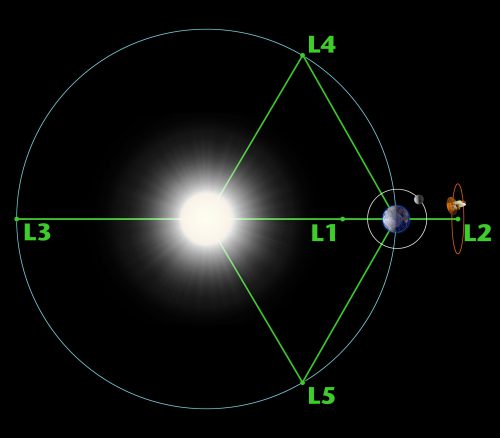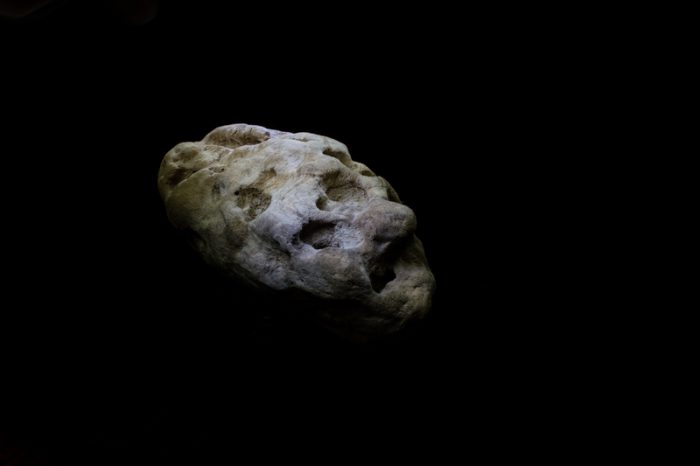Astronomers have made a super cool discovery about someone living on the Earth's 'street'.
What does that mean, you ask?
If we imagine the solar system as our neighbourhood, we can perhaps also imagine our orbital path around the Sun as our street. Why not, right?
Earth is clearly the big house on the block, but there are others. Though the Moon orbits us, it follows us around the Sun as we drive on our street. And now, scientists have found another neighbour that they would like us to meet.
Its name is 2020 XL5. And it is a trojan asteroid.
Locked in

A simple diagram of the Lagrange points around Earth. Trojan asteroids live in these spaces. (NASA)
Trojan asteroids, or trojans, are really curious celestial bodies. They can be quite large, often known as minor planets (that's an object in direct orbit around the Sun that is neither a planet or a comet). But that size isn't what makes a trojan a trojan.
Instead, it's where they live on a planet's street.
Trojans hang out in areas known as Lagrange points. These are spots between two large objects—such as a star and a planet—where an object can sort of hitch a ride by using the gravity of those two objects. By being in one of a planet's five Lagrange points (called L1 to L5), trojan asteroids can just kick back and zoom around for thousands of years at a time. Neat!
And in case you're still not clear, listen to NASA's Dr. Adriana Ocampo Uria break them down for you in this helpful video. Thanks, Doc!
Meet your new neighbour!
As Dr. Uria explains, NASA can use Lagrange points to help position probes and satellites—like the brand new James Webb Space Telescope—in a stable orbit that requires next to no fuel at all. But we're here to talk about trojan asteroids!
In particular, 2020 XL5.
It is a C-type—or carbonaceous—asteroid that is about 1,180 meters (3,871 feet) in diameter. Its type come from the fact that it is very rich in carbon, which also makes it very dark. It is the second known trojan around Earth and hangs out in the L4 Lagrange point. The first known trojan asteroid around Earth—2010 TK7—also lives in L4, but is much smaller at about 300 meters (984 feet) across.
Do other planets have trojan asteroids? You bet! In fact, Jupiter has around 11,000! The other planets are more modest, with quieter streets. Neptune has 32. Mars has nine.
And then there's our street. Compared to Jupiter's mighty avenue—which is full of trojan apartments and moon condos—we live on a peaceful country lane. The kind where you know all of your neighbours by name and occasionally drop by unannounced with freshly baked cookies or a pie. Does this mean that one of us should hop on over and share some muffins with 2020 XL5? Sounds like a lovely idea to us!
Before you make the trip, maybe you'd like to learn a little more about the heritage of trojans? Because they have quite the past ...
 Asteroids are deeply mysterious objects with links to the origins of our solar system. (ID 46740221 © Lucagal | Dreamstime.com)
Asteroids are deeply mysterious objects with links to the origins of our solar system. (ID 46740221 © Lucagal | Dreamstime.com)









